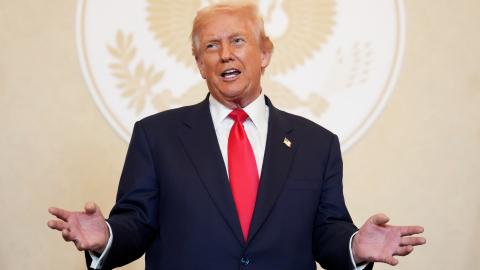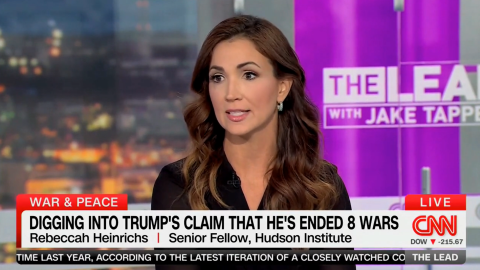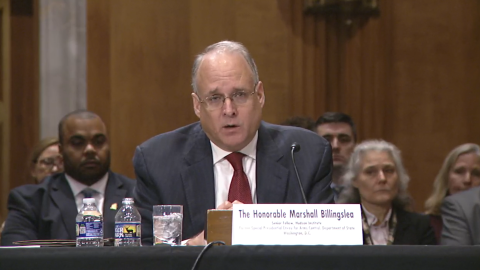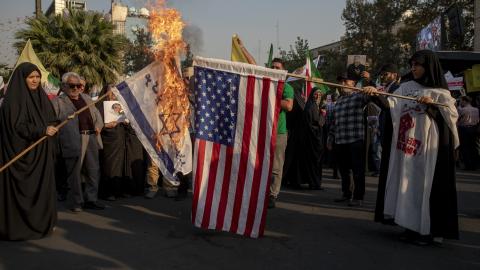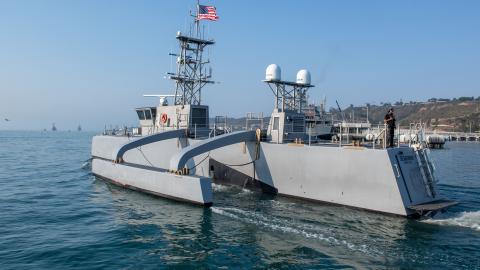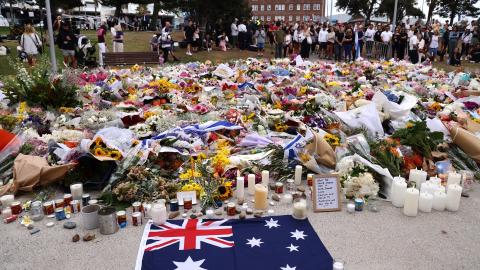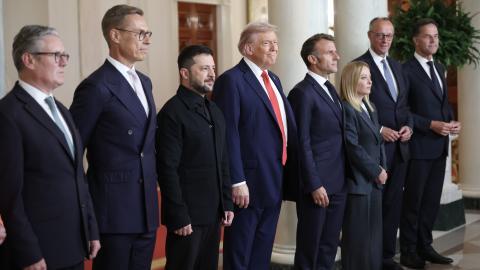President Donald Trump met last week with Russian President Vladimir Putin in Alaska, and then met with Ukrainian President Volodymyr Zelenskyy and several top European leaders at the White House this week. Yet for Ukraine to secure the just peace it deserves, Kyiv, Washington, and their partners need to resolve two outstanding issues.
First, Ukraine is concerned with maintaining internationally recognized borders. Russia fully controls the Crimean Peninsula, which Moscow illegally seized from Ukraine in 2014. But Russian forces do not control the full administrative territory of any other Ukrainian oblast that it wants to annex (Donetsk, Luhansk, Kherson, and Zaporizhzhia). And since November 2022, Russia has expanded its occupation by only about 2,240 square miles—less than 1 percent of Ukraine’s total land area. For comparison, Russia’s territorial gains after 1,000 days of war amount to roughly the same proportion as if a foreign power occupied only Central Park out of all five boroughs of New York City. These limited gains have cost Russia an estimated one million casualties and tens of thousands of pieces of equipment. Understandably, Kyiv remains unwilling to relinquish control over areas Russia has not even conquered. Ultimately, the Ukrainian people should determine the future status of these territories.
Second, Ukraine wants stronger security guarantees. Unlike the territorial control question, security guarantees require the United States’ involvement. Ukraine remains understandably wary of assurances that sound strong but prove meaningless, as has happened previously. The West’s weak responses to Russia’s invasions of Crimea in 2014 and mainland Ukraine in 2022 demonstrated the ineffectiveness of the 1994 Budapest Memorandum and the 2014–15 Minsk agreements, respectively.
The most immediate and effective way to guarantee Ukraine’s long-term security is membership in the North Atlantic Treaty Organization, which is technically possible even if some of Ukraine’s territory remains under Russian occupation. This should remain Kyiv’s final goal. But President Trump does not support Ukraine joining NATO, nor will he commit to sending combat troops to Ukraine.
With this political reality in mind, policymakers should instead consider a five-layered approach to guaranteeing Ukrainian security. While no single layer is sufficient on its own, together they will provide the most robust protection currently possible.
Layer 1: Monitoring Mission
Maintaining peace after a ceasefire will require a civilian monitoring mission that can patrol both sides of the line of occupation. This mission will likely (1) consist of unarmed personnel, (2) depend heavily on unmanned surveillance, and (3) be led by a country or organization that both Ukraine and Russia can trust. Two possibilities are the Organization of Turkic States or the Gulf Cooperation Council. Both seek to expand their geopolitical stature, and their constituent countries have maintained largely cordial relations with both Kyiv and Moscow.
Layer 2: Coalition of the Willing
Given the current political climate, NATO will not have a formal role inside Ukraine in the short term. Still, member states could contribute forces to serve as a security guarantee and a deterrent to future Russian aggression. Several countries—including the United Kingdom, France, Canada, and Türkiye—have publicly suggested they could send troops to Ukraine in the event of a peace deal. This coalition should contribute to deterrence efforts across the land, air, and sea domains.
- Boots on the ground. International partners should deploy rotational ground forces in Ukraine. Coalition forces would patrol areas that are distant from the line of occupation with a focus on geographical vectors Russia is likely to attack along in a future invasion. These units would train regularly with Ukrainian forces.
- Air policing over Ukraine. The coalition should implement a mission modeled after NATO’s Baltic Air Policing to secure Ukraine’s airspace and civilian airports. Participating countries should agree to a rotation schedule well in advance to ensure continuity. This mission could be based out of Poland and Romania.
- Black Sea patrols. A secure and open Black Sea is vital for Ukraine’s economy and regional stability. Türkiye may eventually reopen the straits to non–Black Sea navies under the Montreux Convention of 1936. In 2021, the year before Russia’s large-scale invasion, forces from six non–Black Sea NATO members (excluding the US) spent a total of 283 days on patrol in the Black Sea. This should serve as a benchmark for future operations. As with the air policing mission, participating countries should agree to a rotation schedule to maintain a near-continuous presence.
Layer 3: America’s Role
Even though President Trump has stated clearly that there will be no deployment of US troops inside Ukraine, he has also acknowledged that any meaningful deterrent against future Russian aggression requires some US involvement. The US should focus its efforts on the following four actions:
- Provide over-the-horizon capabilities. The US should provide key capabilities that enable European forces to operate more effectively in Ukraine, such as air-to-air refueling, intelligence sharing, air policing patrols, Black Sea patrols at 2021 levels,1 and the pre-positioning of US forces outside Ukraine, possibly at American bases in Germany or Italy, for potential deployment in a crisis.
- Continue arming Ukraine. Ukraine’s armed forces will remain the cornerstone of any future security guarantee for the country. The White House should begin coordinating with Congress to prepare a new aid package in the event of a peace deal. Russia will almost certainly rearm during this period, so it is in America’s interest to ensure Ukraine remains resilient and capable. Ongoing military support will not only bolster Ukraine’s defense but also benefit the US defense sector.
- Restart the National Guard State Partnership Program (SPP) with Ukraine. Since 1993, the California National Guard has partnered with Ukraine through the SPP to improve military interoperability. But this program has been on hold since 2022. Policymakers should revive this program to enhance US-Ukraine military relations without putting US boots on the ground.
- Expand US-Ukraine defense industrial cooperation. The war has accelerated the growth of the defense industry in Ukraine, which was already among the world’s top 10 defense exporters prior to 2014. Closer cooperation between the US and Ukraine would give the American industry access to cutting-edge innovations—particularly in unmanned systems—while helping Ukraine bolster its domestic defense capabilities.
Layer 4: Euro-Atlantic Engagement
As Ukraine continues its journey toward Euro-Atlantic integration, NATO, the EU, and even the US can take practical steps to deepen engagement with Kyiv and pave the way for Ukraine’s eventual membership.
- Create a NATO-certified Center of Excellence on Modern Warfare with Ukraine. NATO members should learn from Ukraine’s hard-earned battlefield experience. Establishing a Center of Excellence on Modern Warfare would formalize this learning process. The center would enable allies to engage in substantive dialogue and training focused on state-on-state conflict in the twenty-first century. It would also provide a visible symbol of NATO-Ukraine cooperation, with both flags flying side by side.
- Invite Ukraine to contribute to the NATO Response Force (NRF). In the event of a ceasefire, NATO should invite Ukraine to undergo certification and earmark specific units for duties with the NRF. This would enhance interoperability without requiring a NATO footprint inside Ukraine. Ukraine has previously contributed to the NRF, so there is precedent for this type of collaboration.
- Launch an EU-led training mission. NATO is unlikely to approve a training mission whether inside or outside of Ukraine. But the European Union could step in under its Common Security and Defense Policy (CSDP) framework. A joint EU-Ukraine training operation at the Yavoriv Combat Training Center in western Ukraine would carry important symbolic and practical value, even if modest in size.
- Increase NATO-Ukraine strategic engagement. While full Ukrainian membership in NATO is off the table for now, the alliance should take steps to ensure continued engagement. Kyiv is an enhanced opportunities partner to NATO and involved with the organization through the NATO-Ukraine Council. Therefore, NATO should regularly invite Ukrainian officials to attend foreign and defense ministerial meetings. Additionally, every NATO summit should include a meeting of the NATO-Ukraine Council. And when appropriate, Ukraine should be invited to participate as an observer in other relevant high-level strategic meetings.
- Support Ukraine’s EU membership. While EU membership is beyond the direct purview of the United States, Washington can still support Ukraine’s aspirations and encourage necessary reforms within the bloc. This will be politically challenging, as the EU does not appear to be seriously discussing the institutional reforms Brussels would need to implement to admit Kyiv. Ukraine’s population size, economic struggles, large agricultural sector, and ongoing conflict with Russia mean that, to admit Kyiv, the EU will need to undertake reforms on a scale not seen since the Lisbon Treaty of 2009. Both sides therefore have substantial work to do. But integrating Ukraine into the EU is a vital step for Ukraine’s long-term future with the West.
Layer 5: Strengthening NATO’s Eastern Flank
NATO needs to bolster its eastern flank against future Russian aggression. While such efforts may not constitute a direct security guarantee for Ukraine, they are critical for maintaining regional stability and sustaining the credibility of NATO’s deterrence posture. Even after successful peace negotiations, Russia will likely threaten Eastern European security in the future. Therefore, the United States and NATO should take appropriate and sustained measures to maintain deterrence.
To ensure long-term stability in Europe—while indirectly supporting Ukrainian security—the US and its NATO allies should:
- Maintain NATO’s presence on the eastern flank. After Russia’s 2014 invasion of Ukraine, NATO established multinational battlegroups—now referred to as forward land forces—in Estonia, Latvia, Lithuania, and Poland. In response to Russia’s 2022 full-scale invasion, NATO expanded its posture by deploying additional battlegroups in Hungary, Slovakia, Romania, and Bulgaria. These deployments are the most tangible element of NATO’s forward deterrence. At a minimum, NATO should maintain these forces at current levels. It should also enhance their readiness and capabilities where needed.
- Consider a greater role for Poland in NATO’s nuclear burden-sharing. NATO is, at its core, a nuclear alliance. For decades, several NATO members have contributed to nuclear burden-sharing by hosting US B61 nuclear gravity bombs and operating dual-capable aircraft that can deliver these munitions. Poland has expressed interest in assuming such a role. Its acquisition of 32 F-35A Lightning II aircraft, which are nuclear certified, presents an opportunity to explore Poland’s participation in this aspect of NATO deterrence.
- Lead the establishment of a northern Europe air defense mission. While the Baltic Air Policing mission has been effective, it is no longer sufficient in the current threat environment. With Sweden and Finland now NATO members, and with Russia’s growing assertiveness, the alliance should establish a more robust and wider-ranging northern Europe air defense mission. A mission with a mandate encompassing the broader Nordic-Baltic region would better reflect current security dynamics.
- Gradually deepen US-Moldova defense ties. The United States should strengthen defense cooperation with Moldova. This could include greater Moldovan participation in US and NATO military exercises, increased opportunities for military education in US institutions, and an enhanced partnership between the Moldovan armed forces and the North Carolina National Guard through the SPP. Importantly, any such cooperation should proceed at a pace determined by Chișinău, respecting Moldova’s neutrality and political sensitivities.
- Maintain US troop levels in Europe. As of early 2025, approximately 100,000 US troops from all service branches are stationed across Europe. While this is significantly lower than the Cold War peak of 350,000, this military presence represents a crucial pillar of US foreign policy. Most of these forces are based in Germany, the UK, Italy, and Poland. Roughly one-third are rotational forces, deployed under initiatives such as Operation Atlantic Resolve, which was launched in response to Russia’s aggression in 2014 and expanded after 2022. US policymakers should resist the temptation to interpret a ceasefire in Ukraine as a justification for force drawdowns. History shows that premature withdrawals only embolden aggressors and weaken deterrence. Maintaining a strong US presence in Europe is essential for transatlantic security in the years ahead.
Conclusion
Putin’s strategic outlook is more similar to that of Imperial Russia than the Soviet Union. He does not seek to spread communist ideology, but rather to dominate neighboring states and reassert Russia as a regional power. This approach aligns with a centuries-long tradition of territorial expansion under the czars, where Russian leaders viewed empire-building as central to national identity. That mindset remains deeply embedded in the Kremlin’s approach today.
Given this imperial orientation, any Russia-Ukraine peace agreement should be viewed as temporary at best. Russia has a consistent record of ignoring or selectively implementing ceasefire terms, often using such pauses to regroup, rearm, and prepare for renewed offensives. Even if Moscow initially complies with the terms of a ceasefire, history suggests the Kremlin will resume its aggression once it is better positioned to achieve its aims.
Since 1999, Putin has repeatedly demonstrated that he is not a trustworthy partner. His long-standing efforts to undermine Western institutions and interests suggest that Russia will continue to threaten the US and its partners after a ceasefire or even a peace deal. The question is not whether Russia will seek to reassert itself, but when and where.
Adopting the five-layered approach described above will give Ukraine the security guarantees it deserves while helping to ensure the security of the rest of the transatlantic community. By virtue of geography, Ukraine will remain on the front line against an expansionist Russia. Decisions the United States and its European partners make now will shape the transatlantic security architecture for decades to come. A layered approach to security guarantees, while imperfect, offers the most practical path forward until Ukraine can achieve full membership in NATO.
